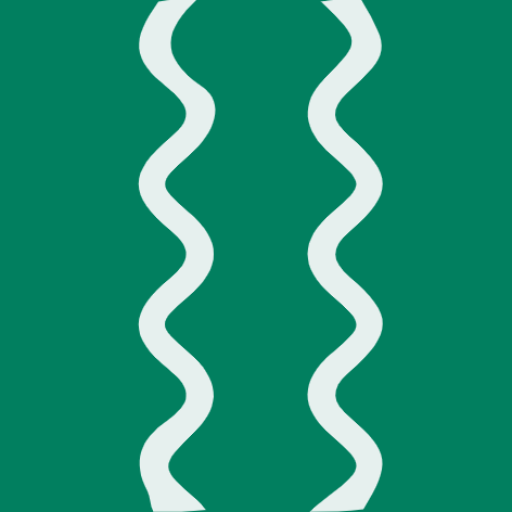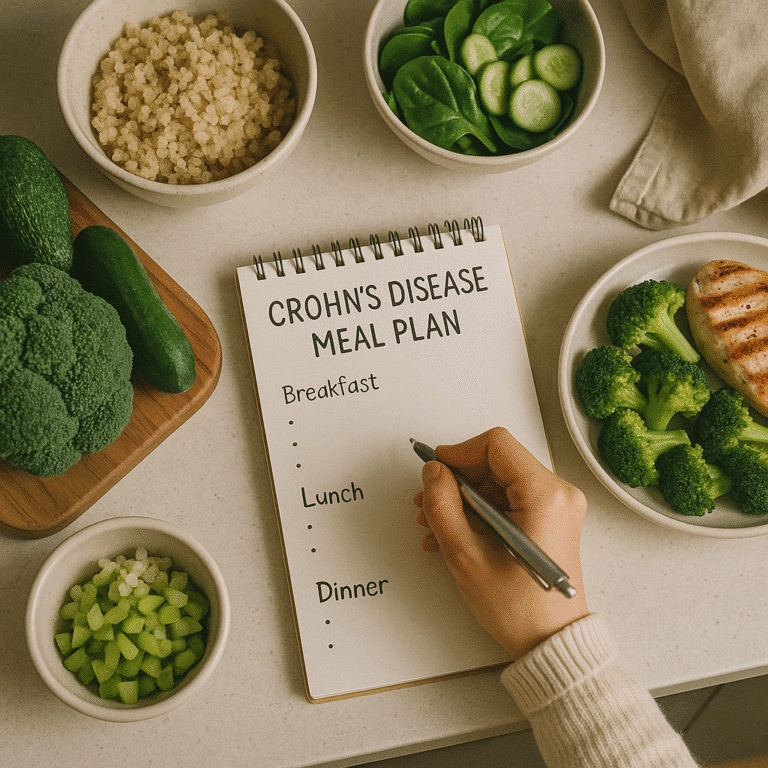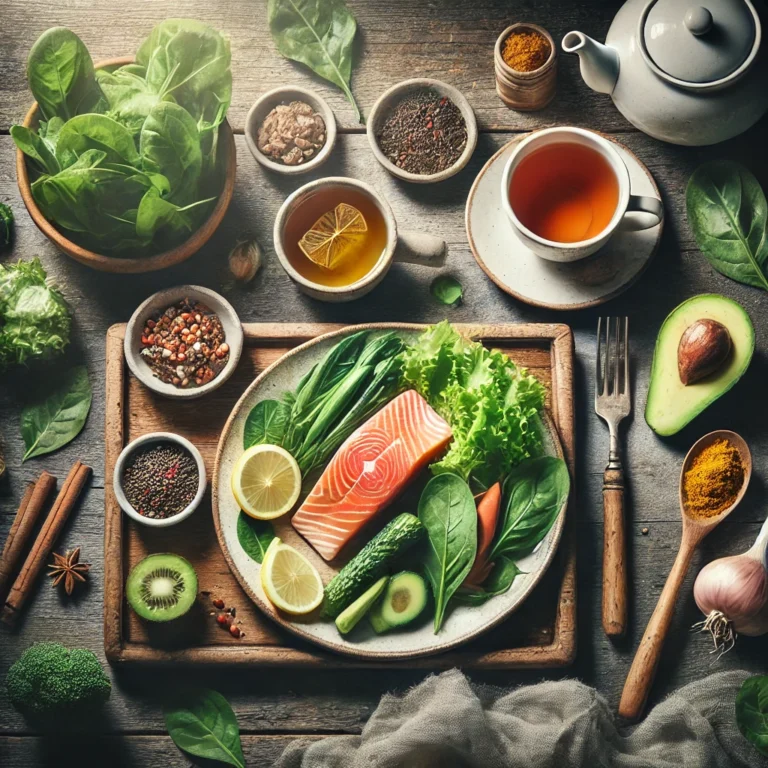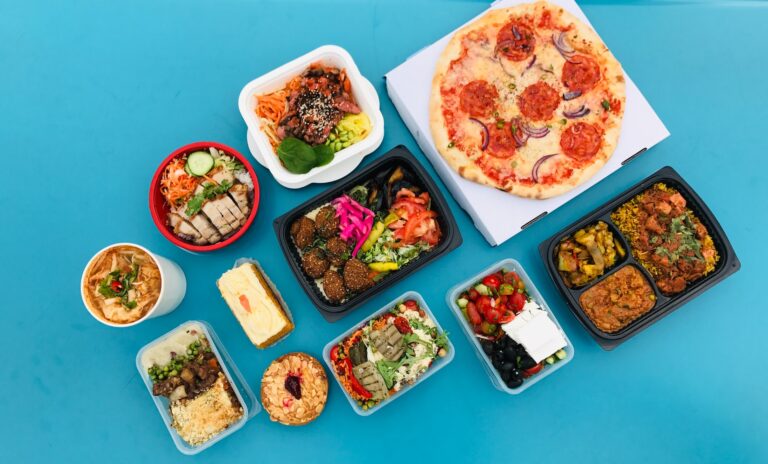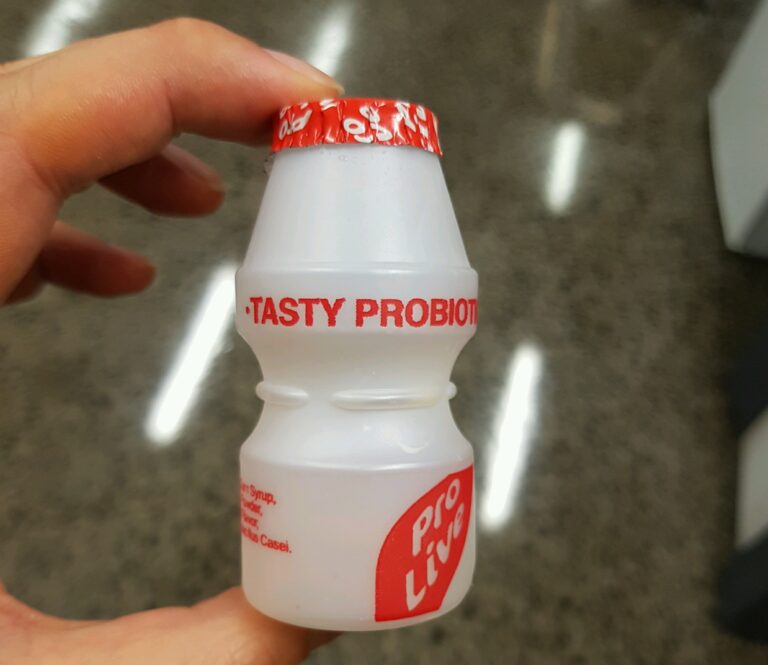Living with Crohn’s disease often feels like you’re trying to fix a leaking pipe while it’s still flooding. You eat something – no reaction. Eat it again – chaos. The unpredictability is exhausting. That’s why a Crohn’s disease meal plan tailored to your symptoms and routines isn’t just helpful – it’s a sanity saver. With the right foods, timing, and preparation, you can reduce flare-ups and regain some control over your gut and your life.
Work With a Specialist to Tailor Your Crohn’s Disease Meal Plan
Before building your Crohn’s disease meal plan, speak to a registered dietitian or gastroenterologist. They’ll help you make sense of your symptoms, guide you through your nutritional deficiencies, and shape a realistic, sustainable eating approach. It’s not one-size-fits-all – Crohn’s disease nutrition plans should be personal.
Find the Foods That Trigger Your Symptoms
Every gut is different, but patterns emerge. Spicy food, raw vegetables, seeds, and fried snacks often top the list of foods to avoid with Crohn’s. Keep a simple food diary. Write down what you eat and how you feel afterwards. Patterns form faster than you think – and once spotted, they’re powerful.
Add More Gut-Friendly Foods That Soothe and Support
Focus on foods that calm the digestive system, not challenge it. Think soft-cooked carrots, mashed sweet potatoes, white rice, skinless poultry, and bananas. This isn’t about restriction – it’s about relief. Your Crohn’s disease meal plan should include these gentler options more often than not.
Choose Foods That Give You More Than Just Calories
Crohn’s can block your ability to absorb nutrients – iron, B12, folate, and vitamin D often take a hit. So don’t just count calories. Prioritise nutrient-dense foods in your Crohn’s disease nutrition plan: eggs, salmon, cooked leafy greens, and fortified products. And yes, supplementation may help, but food first.
Why Smaller Meals Work Better With Crohn’s
Your digestive system works harder than it should. Big meals can overload it and trigger symptoms. Eating five to six small meals a day – think snack-sized portions – can help you stay fuelled without causing a flare. It’s the basis of many successful Crohn’s disease diet plans.
Make Your Crohn’s Disease Meal Plan Stick in the Real World
Planning meals in a vacuum is easy. Sticking to them while running late, surrounded by tempting snacks, or dealing with social pressure? That’s the real test.
Start by reframing the plan as a routine, not a rulebook. People are more likely to stick to changes that feel flexible. Prepping food in advance – even just basic ingredients – reduces impulsive eating. Use the “If-Then” planning technique: If I get hungry late at night, then I’ll eat my safe prepped oatmeal. This simple trick improves follow-through dramatically.
Another strategy? Environmental nudging. Keep your gut-friendly foods in clear view, and the “no” foods out of reach. Behavioural economics tells us we’re lazy – we eat what’s easiest.
And don’t aim for perfect. One deviation doesn’t mean failure – it’s feedback. Adjust, repeat, improve.
When to Consider Supplements in Your Meal Plan
Sometimes, food alone can’t keep up. Omega-3 fatty acids, probiotics, and vitamin D may support your gut and overall health. But supplements should never replace a solid Crohn’s disease meal plan – they should support it. Always run changes past your healthcare provider.
How to Handle Dairy, Gluten and Other Irritants
Lactose and gluten sensitivities are common among people with Crohn’s. If you’re reacting to dairy or wheat, try cutting them out for a few weeks, one at a time. Swap in almond milk or rice-based alternatives. Crohn’s flare-up diets work best when they focus on removal and replacements.
Crohn’s Disease Meal Prep That Saves Time and Reduces Stress
Cook once, eat smart. Batch-cooking meals that are easy on the gut – like baked chicken, white rice, or gentle soups – means fewer decisions and less stress. This is about habit-building. The easier your routine, the more likely you’ll stick to your Crohn’s disease food list. For inspiration, check out these Crohn’s disease recipes tailored to be gentle on your digestive system.

What to Eat (and Avoid) During a Flare-Up
When a flare strikes, switch to a soft, low-fibre diet. Go bland – boiled potatoes, plain toast, applesauce. Avoid greasy food, raw veg, and anything spicy. Think of it as your Crohn’s flare-up diet: temporary, focused, and designed to calm things down.
The Link Between What You Eat and How You Feel
Stress and diet are more connected than we realise. Emotional eating, anxiety around meals, and the fear of triggering symptoms can lead to poor decisions or food avoidance. Slow down. Eat mindfully. Get support when needed. Your Crohn’s disease diet tips aren’t just physical – they’re psychological too.
Track What Works So You Can Build On It
Your best tool? A simple log. Record what you eat, how you feel, and anything else that changes. This builds your own Crohn’s disease food list – one that works for you. Over time, you’ll build a clear picture of what helps and what hurts.
Creating a personalised meal plan is an empowering journey that can transform our lives with Crohn’s disease. Remember, we are unique individuals with unique needs – our meal plans should reflect that! Embrace the power of nutrition, seek support from healthcare professionals, and find joy in experimenting with new recipes. Together, we’ll conquer Crohn’s, one delicious and nourishing meal at a time.
Common Questions About Crohn’s Disease Meal Plans
The best plan is personalised – focusing on gut-friendly foods, small meals, and avoiding known triggers like spicy or high-fibre options.
Common culprits include raw vegetables, spicy foods, dairy, gluten, fried foods, and anything high in insoluble fibre.
While diet can’t cure Crohn’s, it plays a key role in reducing inflammation and managing symptoms when tailored properly.
During a flare, eat bland, soft, and low-fibre foods like white rice, bananas, and cooked carrots. Avoid greasy or spicy meals.
Batch cook soft, easy-to-digest meals. Store in small portions. Prioritise ingredients that reduce stress on the gut.
